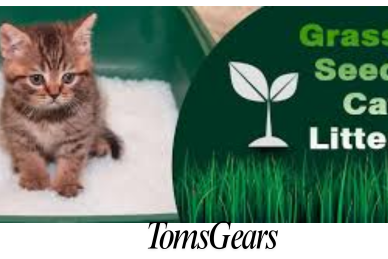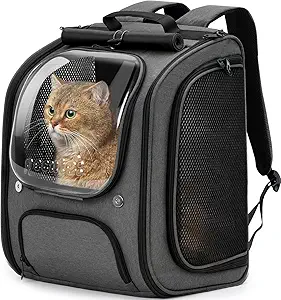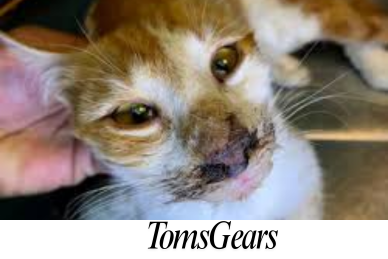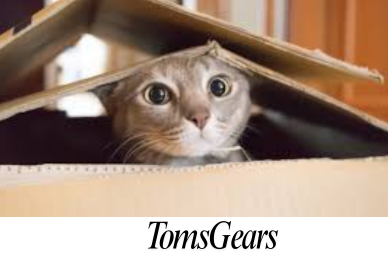Should I Supervise My Cat During Playtime?
Yes, you should supervise your cat during playtime to ensure safety, avoid potential hazards, and strengthen your bond. While cats are often seen as independent creatures, playtime can introduce certain risks, especially when using interactive toys. Supervision allows you to monitor their behavior, manage their energy levels, and prevent accidents or injuries. This article explores why supervision is crucial, the benefits it offers, and how to create a safer, more engaging play environment for your feline friend.
Why is Supervision Important During Playtime?
Supervising your cat during playtime helps protect them from injury and stress. Cats, especially kittens and young adults, can get overly excited and sometimes push their bodies beyond their limits. Supervision ensures that they are using toys safely and not engaging in dangerous behaviors, such as chewing on strings, getting entangled, or swallowing small objects.
Without supervision, seemingly harmless toys like feather wands or laser pointers can pose risks if used improperly. For example, a feather wand can break, leaving sharp sticks exposed, or a laser pointer can cause frustration if overused without a satisfying end to the chase.
Can Cats Hurt Themselves While Playing?
Yes, cats can hurt themselves, even with simple toys. Here are a few common scenarios where injuries may occur:
- String and Ribbon Toys: Cats love to chase strings and ribbons, but these can easily get wrapped around their necks, paws, or tails, causing cuts or choking hazards.
- Feather Wands: If your cat pounces too aggressively, they can land awkwardly, leading to joint or muscle injuries. Feathers can also detach and become a choking risk.
- Laser Pointers: Excessive use without a proper ending can cause stress and may lead to behavioral issues such as obsessive shadow chasing.
The statistics back up these concerns. According to a 2020 survey by Pet Poison Helpline, 1 in 5 cats treated for foreign object ingestion had swallowed parts of toys, with strings and feathers being the most common culprits. Supervision minimizes these risks by allowing you to step in immediately if your cat is at risk of hurting themselves.
Does Supervised Play Help Strengthen the Cat-Owner Bond?
Absolutely! Supervised playtime is not just about safety; it’s also a great way to build trust and deepen your relationship with your cat. Cats are more likely to be affectionate and responsive if they associate you with positive experiences like engaging play sessions. When you take an active role in their playtime, you become part of their hunting and play rituals, which is a key bonding activity for cats.
In a study published by the Journal of Feline Medicine and Surgery, cats that experienced 15-20 minutes of interactive play daily showed a 30% increase in positive social behaviors towards their owners. This shows that supervised play can turn your cat’s playtime into a shared experience, making it more enjoyable for both of you.
Is There a Risk of Overstimulation if I Don’t Supervise?
Yes, cats can become overstimulated if left alone during playtime, which can lead to aggressive behaviors such as biting, scratching, or sudden outbursts of energy. Overstimulation happens when your cat’s excitement levels get too high, turning play into aggression.
Supervision helps you identify the signs of overstimulation, such as:
- Tail swishing or flicking rapidly
- Ears flattened back
- Dilated pupils
- Low, rumbling growls
If you notice these signs, it’s a signal to pause the play session and give your cat a break. This prevents negative associations with play and helps your cat learn self-control.
Can Leaving Cats Unsupervised During Play Lead to Destructive Behavior?
Leaving cats alone during playtime with certain toys can lead to destructive behavior and unintended damage. Cats may chew on cords, scratch furniture, or knock over household items when left unsupervised. Toys that dangle or have small parts, like bells or plastic pieces, can be particularly tempting to chew, potentially leading to:
- Chewed power cords: A common issue in unsupervised cats, leading to electric shocks or burns.
- Furniture damage: If a cat becomes overexcited, they may redirect their energy to scratching nearby furniture or carpet.
Data from a 2019 survey by the American Association of Feline Practitioners (AAFP) showed that 45% of cats left unsupervised with dangling toys caused some form of property damage, either by knocking things over or chewing inappropriate objects. Regular supervision allows you to redirect your cat’s attention and energy to appropriate activities.
What Are the Best Toys for Supervised Play?
Not all toys are suitable for unsupervised use, but there are plenty of options that are perfect for interactive play. Here’s a quick comparison table to help identify the best toys for supervised play:
| Toy Type | Best Used For | Safety Considerations |
| Feather Wands | Chasing, pouncing | Check for loose parts; avoid over-aggressive movements |
| Laser Pointers | High-speed chases | Avoid shining directly in eyes; end session with a catch |
| Catnip Mice | Chewing, carrying | Supervise to prevent ingestion of catnip or stuffing |
| Puzzle Toys | Mental stimulation | Ensure no small, detachable pieces |
Using these toys in short, supervised sessions helps ensure your cat has a safe, engaging, and satisfying playtime.
How Much Supervision is Needed During Playtime?
The level of supervision needed depends on your cat’s age, activity level, and play style. Kittens and highly active cats require more attention because they are more likely to get into trouble. Aim for 10-15 minutes of supervised play two to three times a day for young and energetic cats. For older or more sedentary cats, shorter sessions of around 5-10 minutes may be sufficient.
What Should You Do if You Can’t Supervise Your Cat?
If you can’t always be there to watch your cat play, choose safe, standalone toys that pose minimal risk. These include:
- Soft, fabric balls
- Large, non-toxic chew toys
- Interactive treat dispensers
Avoid toys with strings, ribbons, feathers, or small parts that can detach. Additionally, consider creating a safe play area in your home. Designate a room or corner with soft surfaces, no fragile items, and a variety of safe toys. This way, your cat can explore and play even when you’re not around.
FAQs
Why does my cat get aggressive during play?
Aggression during play is often a sign of overstimulation. If your cat becomes aggressive, stop the play session immediately and give them a few minutes to calm down.
Can I leave my cat alone with a feather wand?
No, feather wands should always be used under supervision. Cats can chew and swallow the feathers, leading to choking or digestive issues.
How often should I play with my cat?
Aim for two to three play sessions a day, each lasting around 10-15 minutes. Adjust based on your cat’s activity levels and age.
Is supervised play necessary for older cats?
Yes, even older cats benefit from supervised play, although the sessions may need to be shorter and less intense.
Can I use laser pointers for unsupervised play?
No, laser pointers should never be used for unsupervised play. They can lead to obsessive behaviors and eye damage if misused.
Summary
Supervising your cat during playtime is essential for their physical and mental health. It prevents injuries, curbs destructive behaviors, and strengthens your bond. By choosing the right toys, monitoring their play, and engaging with them in a safe, structured way, you ensure that playtime is both fun and beneficial for your feline friend. Remember, every cat is unique, so tailor your supervision style to meet their specific needs for a safe and rewarding play experience.






